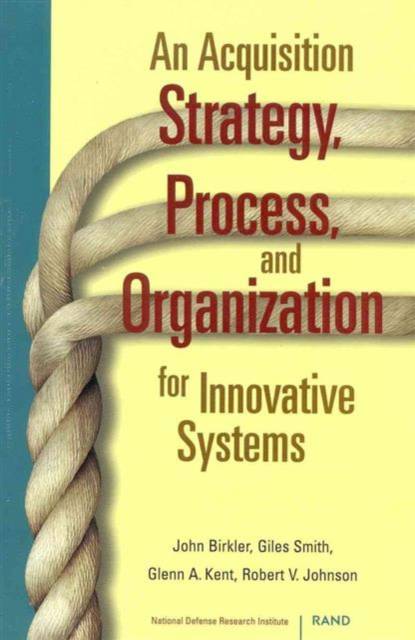
- Afhalen na 1 uur in een winkel met voorraad
- Gratis thuislevering in België vanaf € 30
- Ruim aanbod met 7 miljoen producten
- Afhalen na 1 uur in een winkel met voorraad
- Gratis thuislevering in België vanaf € 30
- Ruim aanbod met 7 miljoen producten
Zoeken
An Acquisition Strategy, Process, and Organization for Innovative Systems
John Birkler, Giles Smith, Glenn A Kent, Robert V Johnson
Paperback | Engels
€ 30,95
+ 61 punten
Omschrijving
The length of time required to move a weapon system through the full sequence of events in the acquisition cycle has long been a source of concern and frustration to government and industry officials responsible for equipping the U.S. Armed Forces. The notion of somehow shortening the cycle duration has been a recurring theme in studies of acquisition and Department of Defense management performed by various panels and commissions. The authors argue that force modernization in the future should put considerable emphasis on the introduction of some unconventional, or novel system concepts. The characterisitics of novel systems differ from those of the systems for which the present acquisition process was designed. They are so different that the authors believe tinkering with the present process will be and inadequate solution.
Specificaties
Betrokkenen
- Auteur(s):
- Uitgeverij:
Inhoud
- Aantal bladzijden:
- 69
- Taal:
- Engels
Eigenschappen
- Productcode (EAN):
- 9780833028020
- Verschijningsdatum:
- 8/02/2000
- Uitvoering:
- Paperback
- Formaat:
- Trade paperback (VS)
- Afmetingen:
- 153 mm x 229 mm
- Gewicht:
- 154 g

Alleen bij Standaard Boekhandel
+ 61 punten op je klantenkaart van Standaard Boekhandel
Beoordelingen
We publiceren alleen reviews die voldoen aan de voorwaarden voor reviews. Bekijk onze voorwaarden voor reviews.











